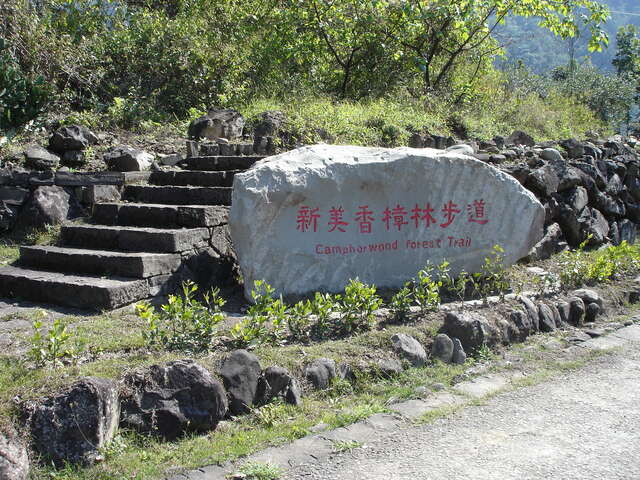Xinmei Camphor Tree Trail Introduction
The path is approximately 2,400 meters long and was originally an old road used by early tribespeople for hunting. It has two entrances, located near the 19-kilometer mark of "Jia 129" rural road and beside the "Niahousa Hunter Camp" at the 20-kilometer mark. Starting from the entrance at the north end, the stone-paved steps and wooden-like staircase wind through the lush forest. Although there are some slopes, it remains refreshing and pleasant to walk. Ferns, flowering grasses in low shrubs, and the abundance of hidden fruits from banyan trees add to the rich scenery of this mountainous area. The winding path intersects with agricultural roads several times. After passing the first intersection with the agricultural road, the route continues deeper into the dense forest, where you will soon see several tall camphor trees standing beside the trail. Subsequently, you arrive at a viewing platform, surrounded by camphor trees, breathing in the subtly fragrant air. During July and August, the camphor trees bear fruit, drawing numerous birds to the area. Continuing forward, there is a viewing pavilion at the highest point of the trail where you can enjoy a moment of tranquility. After resting for a while, you slowly descend along the downhill path. The scenery gradually changes to a secondary forest composed of dense bamboo, cedar, and broadleaf trees. Soon, you will encounter a farm where villagers grow ginger, citrus, and other crops. This area is also close to the intersection of the southern section of the trail with the agricultural road. After a short stretch of path shared with the agricultural road, you enter a vast tea-oil tree forest. The large seeds of the tea-oil trees hang down from the old branches, most of which are grown without pesticides. After harvesting, the tea seeds are treated through sun drying and then pressed in the village to produce smooth and aromatic tea oil. After walking another stretch of wooden stairs and the wooden-like staircase path through the bamboo forest, you will reach the entrance of the trail beside the "Niahousa Hunter Camp."

































